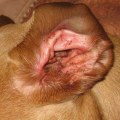It is essential to know if your pet is overweight or underweight, as this can have a major effect on their health and wellbeing. Fortunately, there are a few simple ways to determine if your pet is in the right weight range. The most effective way to tell if your pet is underweight or overweight is to look at their body shape. Ideally, you should be able to see your pet's waist tucked behind their ribs.
If the waist is narrower than the ribcage, this suggests that your pet is underweight. On the other hand, if the waist is aligned with the ribs or protrudes beyond them, it implies that your pet is overweight. You can also feel your pet's ribs to determine their weight. If you can feel the bones under slight pressure, this indicates that your pet is in good health.
However, if you have to press harder to feel the ribs, this may suggest that your pet has excess fat around the ribcage and is overweight. It's also important to observe your pet as a whole and evaluate their body condition. The Body Condition Score (BCS) exam will provide you with an accurate assessment of your pet's weight and will define a specific goal for them based on their size, breed and shape. It's natural to want to give your pet more food when they ask for it, but it's important to remember that a healthier pet will always be a happier one.
If your pet is obese, they are at risk of developing serious health problems which can threaten their life. If this is the case, it's essential that they undergo regular health checks.











Leave a Comment